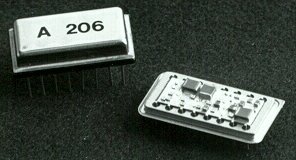


Model A206 is a Voltage Amplifier/Low level Discriminator developed especially for instrumentation employing solid state detectors, proportional counters, photomultipliers or any charge producing detectors in the pulse height analysis or pulse counting mode of operation.
While this unit was specifically designed for satellite instrumentation, the following unique characteristics make them equally useful for space, laboratory and commercial applications:
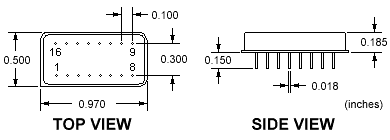

| Gain | 10x nominal, non inverting |
| Input polarity | 1) Positive Unipolar; Dynamic range: 85% of Vs 2) Bipolar; If a bipolar input is used, an external resistor (Rb = 330 K ) must be connected between Pin 3 and ground. Dynamic range: 65% of Vs |
| Dynamic range | 65% of Vs |
| Ac Output Impedance | 20 ohm |
| Integral Nonlinearity at full output | < 0.5% |
| Input Polarity | Positive or Bipolar |
| Output pulse | Positive; 5 µs wide; 90% of Vs. The output pulse width can be increased by the addition of an external capacitor (1 to 10 pF) between Pins 6 and 8. |
| Rise time | 20 ns |
| Reference voltage | Pin 11, Vr; Range: +4.5 to +5.5 VDC (impedance > 2 Mohm) |
| Variable voltage | Pin 10, Vv; (Vv < Vr) |
| Discrimination Level | Vr - Vv (impedance > 2 Mohm) |
| Operating Voltage | +10 to +18 VDC |
| Operating Current | 0.8 mA quiescent @ 15V |
| Temperature | -55 to +70 ºC operational |
| Package | 16 Pin Dual In-Line (Metal) |
| Screening | Amptek High Reliability |
| Warranty | One year |
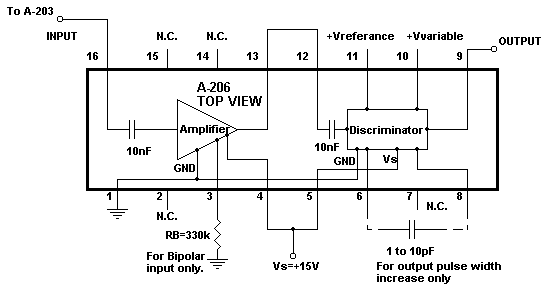
| Pin 1 | Ground and Case |
| Pin 2 | No Connection |
| Pin 3 | Bipolar Input Bias |
| Pin 4 | Vs Amplifier (+10V to +18V) |
| Pin 5 | Vs Discriminator (+10V to +18V) |
| Pin 6 | Discriminator Pulse Width Adjust |
| Pin 7 | No Connection |
| Pin 8 | Discriminator Pulse Width Adjust |
| Pin 9 | Discriminator Output |
| Pin 10 | +Vv variable (Vv < Vr) |
| Pin 11 | +Vr reference (+4.5 to +5.5 VDC) |
| Pin 12 | Discriminator Input |
| Pin 13 | Amplifier Output |
| Pin 14 | No Connection |
| Pin 15 | No Connection |
| Pin 16 | Amplifier Input |

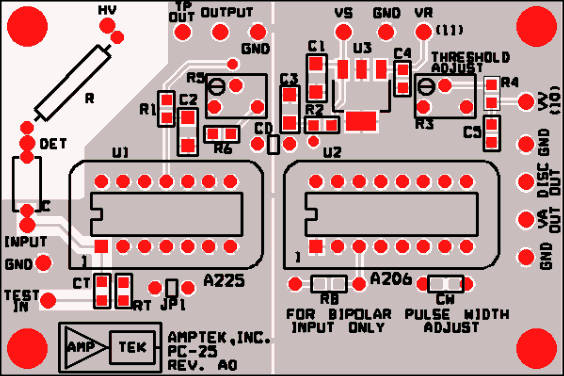
PC-25 test board for the A225 with the A206.
The A206 has two parts:
1) A matching Voltage Amplifier (VA) to the A203 or A225
2) A Lower Level Discriminator (LLD)
The output of the VA is NOT internally connected to the LLD. Pin 13 MUST be connected to Pin 12 if the LLD is to be used.
Power to the VA and LLD is provided separately in order to provide maximum flexibility for independent operation. However, for normal operation Pins 4 and 5 should be connected to Vs.
The VA has an internal input coupling capacitor and no other external capacitor is needed when connecting to either unipolar or bipolar outputs of the A203 or the A225.
If the output of the VA (Pin 13) is to be connected to external circuitry it MUST be coupled with an external capacitor. This output can drive several feet of unterminated coaxial cable.
For bipolar input pulses to the VA connect a 330 kohm resistor from Pin 3 to ground. This biases the amplifier for maximum dynamic range.
The LLD requires a reference voltage Vr and a variable voltage Vv. Set Vr at a level between +4.5 and +5.5 Volts and Vv to a lower voltage than Vr. The Difference, Vr-Vv, is the discrimination level at which the unit will trigger. For example, if Vr = +5 V and Vv = +3.5 V, any pulse of amplitude greater than +1.5 V will trigger the discriminator.
The LLD output pulse is typically a 5 µs wide positive pulse. A wider pulse can be obtained by connecting a capacitor (1 to 10 pF) between Pins 6 and 8. Leave these pins unconnected if the standard pulse width is acceptable.
A typical circuit to provide bias to the LLD is shown below.
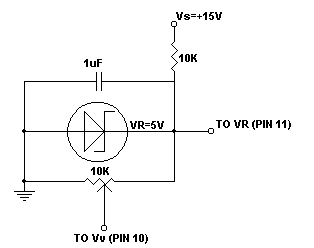

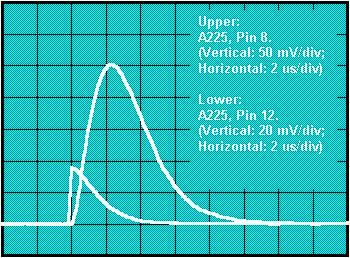
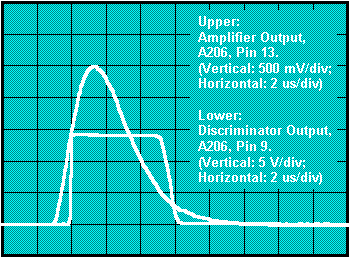

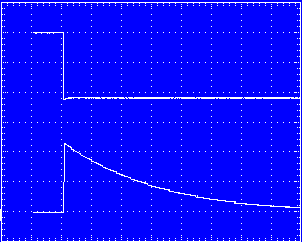 Horizontal Scale: 10Ás/div Vertical Scale: 10mV/div Top Trace: Input to test capacitor -22mV = 1 MeV(Si) Bottom Trace: Output of CSP (A-203, Pin 13) |
 Horizontal Scale: 500ns/div Top Trace: Unipolar output of SA (A203, Pin 8) Vertical Scale: 50mV/div Bottom Trace: Bipolar output of SA (A203, Pin 9) Vertical Scale: 100mV |
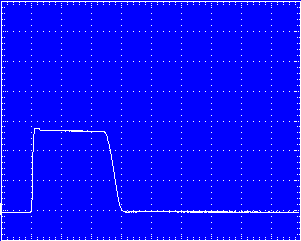 Horizontal Scale: 5V Vertical Scale: 2Ás LLD Output-Positive (A206, Pin 9) | |
Revised February 8, 2001